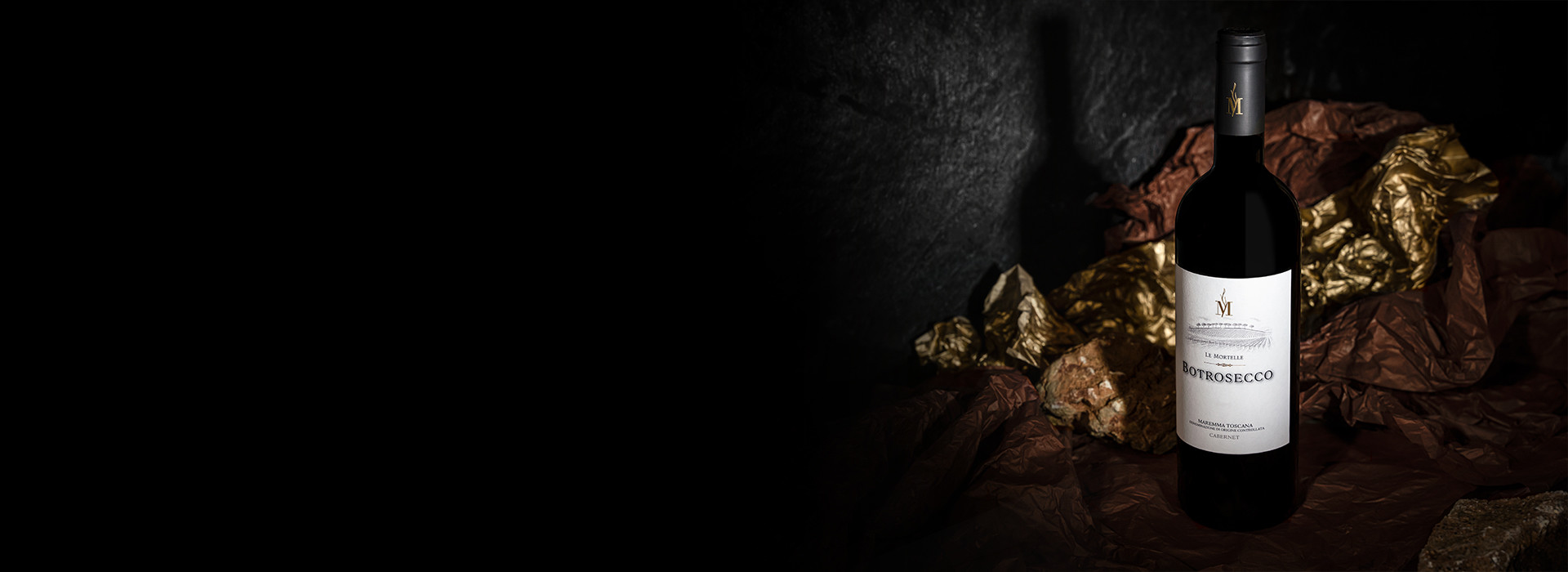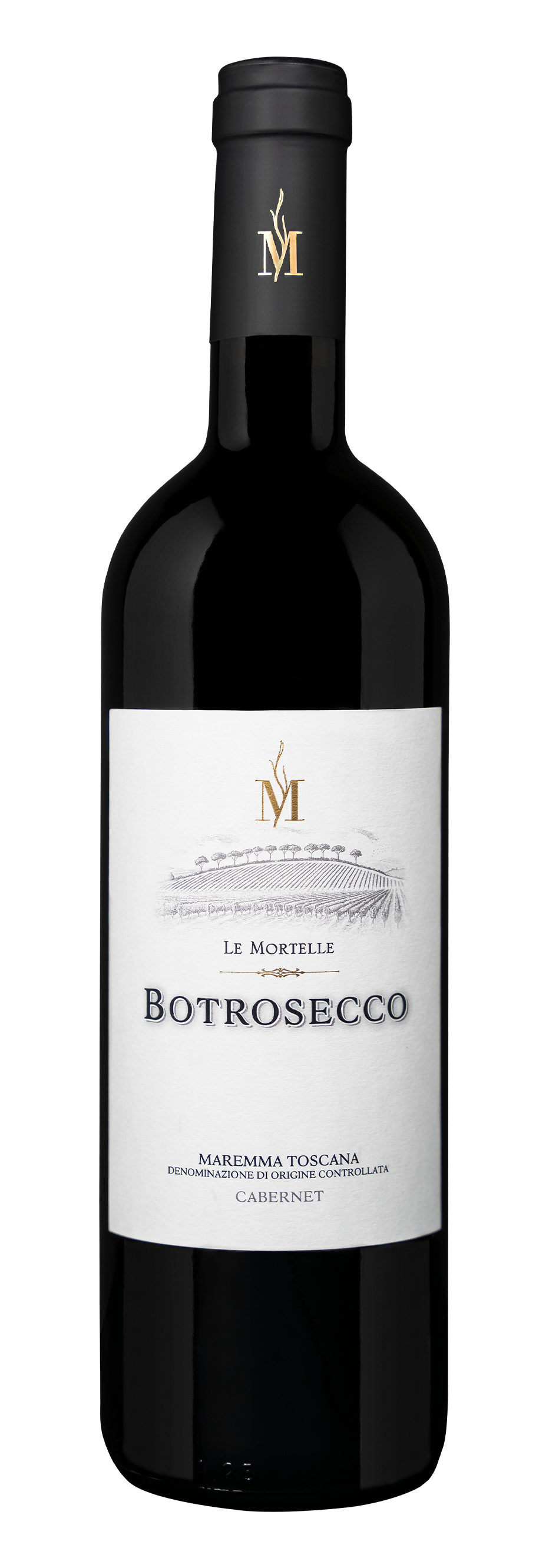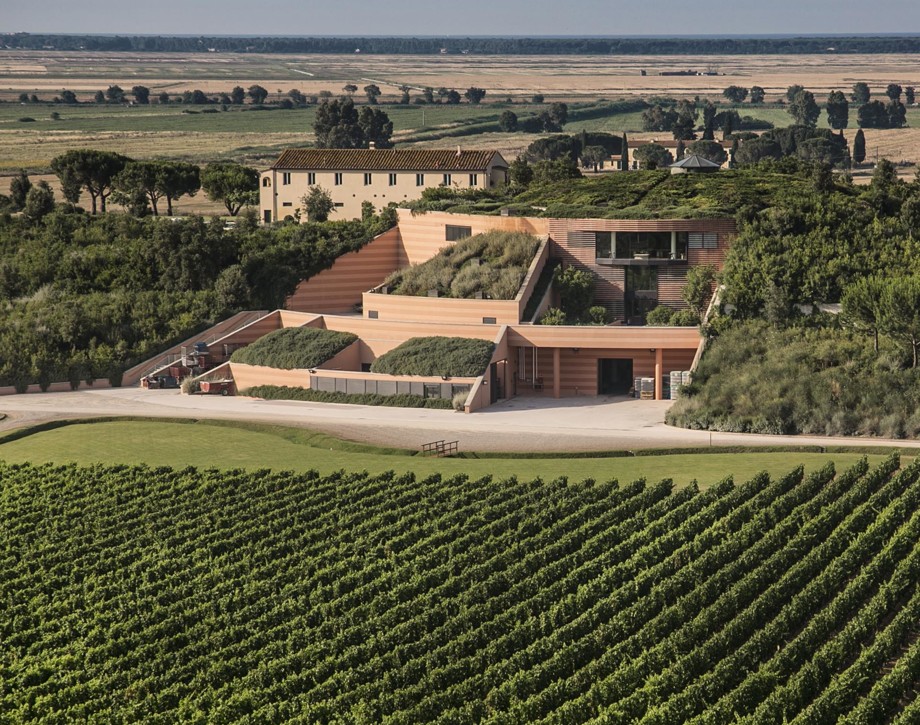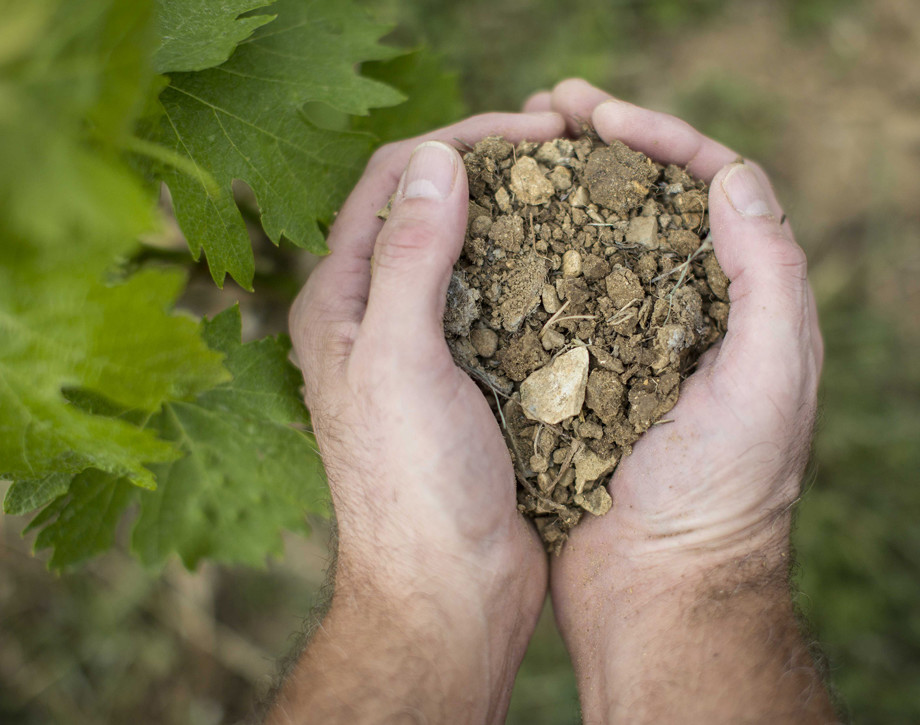Botrosecco

Climate
After a mild winter, a somewhat cool summer led to a longer growing season than the average of recent years, postponing picking by approximately ten days. With the arrival of the month of September, a rise in temperature assisted in a full ripening of the grapes, which conserved at the same time good flavor freshness.
Vinification
The crop was first selected in the field during picking, then destemmed and pressed at the cellars and the must fermented in stainless steel tanks. Fermentation temperatures rose to a maximum of 77° Fahrenheit (25° centigrade) in order to fully bring out the varietal aromas and the integrity of the fruit. During the fifteen day period of maceration, the skins were regularly bathed in order to extract only their noblest and most elegant elements. Once run off its skins, the wine was racked again into the stainless steel tanks, where it was put through a complete malolactic fermentation by the end of the year. The wine was then aged for twelve months in small oak barrels and bottled. Several months of bottle aging preceded commercial release.
Historical Data
The Fattoria Le Mortelle estate is located in the heart of the Tuscan Maremma just a few kilometers away from the town of Castiglione Pescaia in an extraordinary and fascinating position both in terms of its natural setting and the history of the area which surrounds it. The Antinori family has always been present in the zone. A property act of 1863 mentions, among other possessions, Poggio Franco, one of the highest quality vineyard plots of the estate, along with other landed parcels. Since 1999, the family has worked both on the vineyards and on new cellars, convinced that this part of Tuscany, already gaining much visibility in the overall Italian viticultural picture, had a very important potential for quality wine. And that here it was possible to express, at a high level, both the characteristics of the terroir and the grape varieties to be cultivated. The estate extends over some 675 acres (270 hectares), 432 of which (175 hectares) are planted to vines Cabernet Sauvignon and Cabernet Franc, along with the more recently planted white varieties (Vermentino, Ansonica, and Viognier) and a small percentage of Carménère. The soil, of medium consistence, sandy and loamy, has a composition principally of clay and silica and, in certain zones, is rather stony as well.
Tasting Notes
An intense red in color, the wine shows a nose of cherries and chocolate. The aromas are rich and complex, dominated by berry fruit along with floral and balsamic sensations. The palate is supple and ample with a vibrant finish of pleasurable freshness conferred by the Cabernet Franc. The fruity notes are also present on the aftertaste along with light notes of fresh tobacco and mint.

The Wine
Botrosecco is made from a blend of Cabernet Sauvignon and Cabernet Franc, an intriguing, decisive wine with great balance expressing the unique characteristics of the Maremma territory.

Climate
After a mild winter, a somewhat cool summer led to a longer growing season than the average of recent years, postponing picking by approximately ten days. With the arrival of the month of September, a rise in temperature assisted in a full ripening of the grapes, which conserved at the same time good flavor freshness.
Vinification
The crop was first selected in the field during picking, then destemmed and pressed at the cellars and the must fermented in stainless steel tanks. Fermentation temperatures rose to a maximum of 77° Fahrenheit (25° centigrade) in order to fully bring out the varietal aromas and the integrity of the fruit. During the fifteen day period of maceration, the skins were regularly bathed in order to extract only their noblest and most elegant elements. Once run off its skins, the wine was racked again into the stainless steel tanks, where it was put through a complete malolactic fermentation by the end of the year. The wine was then aged for twelve months in small oak barrels and bottled. Several months of bottle aging preceded commercial release.
Historical Data
The Fattoria Le Mortelle estate is located in the heart of the Tuscan Maremma just a few kilometers away from the town of Castiglione Pescaia in an extraordinary and fascinating position both in terms of its natural setting and the history of the area which surrounds it. The Antinori family has always been present in the zone. A property act of 1863 mentions, among other possessions, Poggio Franco, one of the highest quality vineyard plots of the estate, along with other landed parcels. Since 1999, the family has worked both on the vineyards and on new cellars, convinced that this part of Tuscany, already gaining much visibility in the overall Italian viticultural picture, had a very important potential for quality wine. And that here it was possible to express, at a high level, both the characteristics of the terroir and the grape varieties to be cultivated. The estate extends over some 675 acres (270 hectares), 432 of which (175 hectares) are planted to vines Cabernet Sauvignon and Cabernet Franc, along with the more recently planted white varieties (Vermentino, Ansonica, and Viognier) and a small percentage of Carménère. The soil, of medium consistence, sandy and loamy, has a composition principally of clay and silica and, in certain zones, is rather stony as well.
Tasting Notes
An intense red in color, the wine shows a nose of cherries and chocolate. The aromas are rich and complex, dominated by berry fruit along with floral and balsamic sensations. The palate is supple and ample with a vibrant finish of pleasurable freshness conferred by the Cabernet Franc. The fruity notes are also present on the aftertaste along with light notes of fresh tobacco and mint.

Fattoria Le Mortelle
The Mortelle estate is in the heart of Maremma in Tuscany, near the town of Castiglione della Pescaia set in an extraordinary and fascinating position both for the territory’s unparalleled natural beauty and its historical heritage and culture. The Antinori family has been part of this territory for generations. Evidence of ownership of land in this area is recorded on a property deed dated 1863. It states their ownership of Poggio Franco, one of the best vineyards on the estate, together with other parcels of land. Since 1999, when the property was acquired, the family has dedicated their efforts to improving the vineyards and building the new winery with the firm belief that this area, slowly emerging on the Italian viticultural horizon, has great potential for the production of high quality wines. Varieties grown in this area can fully express their own characteristics as well as the exceptional qualities of the terroir. The property extends over an area of 270 hectares (667 acres) 175 of which (432 acres) are planted with vineyards of Cabernet Sauvignon, Cabernet Franc and other more recently planted vineyards with white grape varieties such as Vermentino, Ansonica, Viognier and a small parcel of Carménère. The soil is of medium consistency, sandy and loamy composed of clay and silica and in some parts of the estate is rich in rocky deposits.

Soil
Calcareous clay soil with abundant very fine gravel.


















